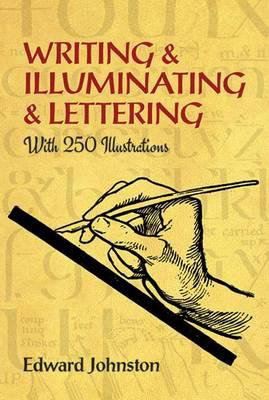
PublishedDover, August 2017 |
ISBN9780486285344 |
FormatSoftcover, 480 pages |
Dimensions18.4cm × 11.8cm |
British scholar and teacher Edward Johnston regarded lettering, writing, and illuminating as not only desirable ends in themselves but also as practical avenues to mastery of typography, decoration, and design. In this classic, profusely illustrated guide, he distilled his expertise into a series of easy-to-follow lessons that will benefit any student of calligraphy, book design, or art.
Part I is devoted to writing and illuminating. Early chapters cover the fundamentals of acquiring a formal hand: choosing paper, ink, and quills; holding the pen; spacing and planning a manuscript; and more. The author then turns to the techniques of producing a manuscript book: tools and materials, methods and proportions, margins, and other methods. Part II offers a detailed discussion of lettering: the qualities of good lettering, methods of construction and arrangement, spacing, proportion, and other matters. Two appendixes cover the uses of lettering in book bindings, wall inscriptions, monograms, and title pages as well as the techniques involved in lettering on metal, wood, and stone. AUTHOR: Edward Johnston (1872 1944) is regarded as one of the fathers of calligraphy and his books and teachings are credited with reviving the art of modern penmanship and lettering. The sans-serif Johnston typeface that appeared throughout the London Underground prior to the 1980s was his most prominent design. Johnston influenced a generation of British calligraphers and typographers, notably Eric Gill, and his students founded the Society of Scribes and Illuminators.

